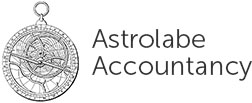Budget 2019-20: Implications for Small Business
 Budget 2019 has a strong emphasis on small businesses. Here are the main announcements that may affect you and your business.
Budget 2019 has a strong emphasis on small businesses. Here are the main announcements that may affect you and your business.
This is an election budget, and so many of the announced features depend on the Coalition both being re-elected and having the numbers to get the legislation through Parliament.
Lower income taxes
Lower taxes help business owners in two ways. The obvious one is that the owner pays less tax on their business profits. The secondary benefit is that customers have more money to spend.
That said, the tax savings are not large in 2018-19. Greater tax savings only come into effect in the 2022-23 and 2024-25 financial years.
By 2024-25, the government expects that 94% of Australian taxpayers will have a marginal tax rate of 30% or less. Marginal tax rate is the rate of tax that a taxpayer pays on each additional dollar of income. A taxpayer’s average rate of tax is much lower.
The government has a calculator to allow you to see what tax you will be paying and your savings under the proposed new tax rates.
There were also previously announced changes to small business tax:
Companies with group turnover under $50 Million that qualify for the 27.5% rate will pay a 25% rate in 2021-22. This is five years earlier than previously planned.
The government has also brought forward the increases to the small business tax discount rate. The maximum discount remains $1000, but it will become easier to reach the maximum discount in 2020-21 and 2021-22.
Instant Asset Write-Off Extended
The government has increased the threshold for the instant asset write-off to $30,000 until 30 June 2020. In addition, for the first time they have made this available to medium-sized businesses. This means businesses with a group turnover under $50 Million per year.
It is important to note that the instant asset write-off does not save any tax in the long run. The write-off simply allows the business to claim a tax deduction in the year of purchase instead of claiming depreciation. It can also have disadvantages. The business may look less attractive to lenders because profits drop when you claim capital purchases in the year of purchase. Businesses that pay tax at individual rates, such as sole traders, may pay more tax over time because of these fluctuations.
Small businesses (businesses with a group turnover under $10 Million per year) depreciate assets costing more than the threshold using the simplified depreciation rules. This means you combine them in a pool and depreciate them at 30% of the pool balance. If the balance of the pool is less than the instant asset write-off threshold, you claim the whole pool balance as a deduction.
Medium businesses still do not have access to the simplified depreciation rules. Assets that cost more than $30,000 you depreciate in the usual way over their effective lives.
The new $30,000 threshold applies to assets purchased after 2 April 2019. For small businesses the previous threshold was $20,000 until 29 January 2019, then $25,000 until 2 April 2019. The date of purchase here means the date on which the asset was first used or installed ready for use. This means that the new, higher threshold can apply to capital assets that were invoiced and paid for but not delivered by 2 April 2019.
ABN Obligations
The government is concerned that there are many more registered Australian Business Numbers (ABNs) than there are businesses in Australia. The 2019 Budget proposes to impose new obligations on the holders of ABNs to disrupt the black economy.
From 1 July 2021, ABN holders will be required to lodge income tax returns.
From 1 July 2022, ABN holders will be required to confirm annually the accuracy of their details on the Australian Business Register.
These requirements are not new, but at present an ABN holder can continue to remain registered even though they do not comply. Businesses must withhold 47% tax from payments to suppliers that do not have an ABN.
Superannuation
From 1 July 2020, the government will remove the work test for people aged 65 and 66. At present, persons over 64 must work at least 40 hours over a 30-day period to make voluntary contributions to super.
People aged 65 and 66 will also be allowed to use the bring-forward cap to make non-concessional contributions into super. This allows them to make up to three years worth of contributions in one year. The current annual limit is $100,000.
